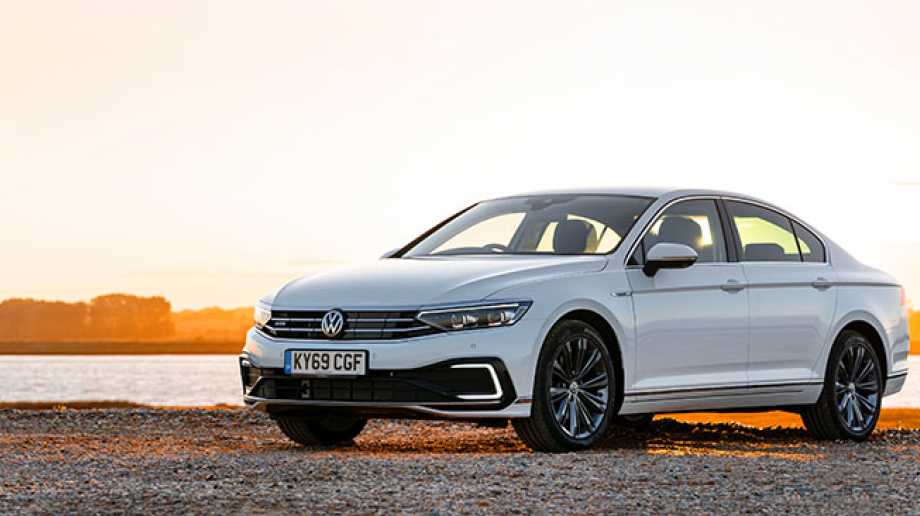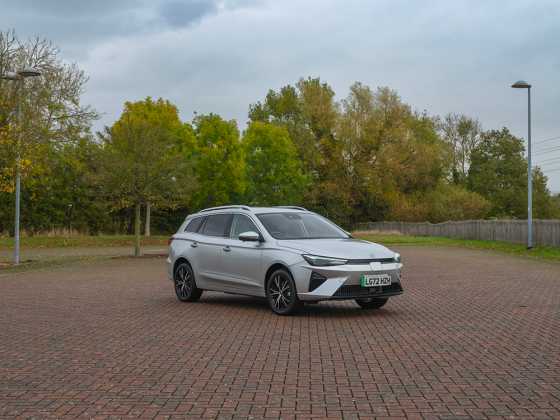First Drive: Volkswagen Passat GTE

Before the arrival of the new all-electric model era, Volkswagen has freshened up the plug-in hybrid version of its mid-size Passat. Richard Gooding finds that a longer all-electric range is just one of the benefits
What is it?
Few may realise it, but the Passat is Volkswagen’s longest-running nameplate in current use. First appearing in 1973, over 30 million have since been sold. The eighth-generation model was introduced in 2014 and its new MQB modular platform brought a host of innovations. The perky yet parsimonious plug-in hybrid GTE arrived in 2015, and an extensively revised model went on sale in the summer of 2019. Volkswagen UK has high hopes for the updated car. The previous GTE accounted for one in ten UK Passat sales, but the improved car is expected to make up a quarter of the big VW’s registrations. That means one in four Passats will be the plug-in hybrid version.
How does it drive?
A traditional Volkswagen trait, the Passat PHEV has subtly evolved looks over its petrol and diesel relatives, and the car it replaces. Outside, the signature ‘C’-shaped front LED running lights are much more prominent, and along with the blue brake calipers, are the most notable changes. The range-topping GTE Advance on test here gains wheels an inch larger than the 17-inch ‘Nivelle’ rims fitted to the entry-level GTE. Less stylised ‘GTE’ badges also mark out the newcomer.
Inside, the cabin appears much as before, but that’s no bad thing. A spacious place of comfort and quality, material quality is high, and logically placed controls make for good ergonomics. Things are much the same as before under the bonnet, too, with a 1.4-litre 148bhp petrol engine mated to an 85kW/114bhp electric motor. System output is 215bhp, but arguably the most beneficial change is the increased energy content in the battery, now rated at 13kWh up from 9.9kWh.
Simpler driving modes also typify the new model. Three, rather than the five of the previous car are now available, the ‘Battery Hold’ and ‘Battery Charge’ functions now incorporated into the ‘Hybrid’ mode. ‘E-Mode’ gives purely electric driving, ‘GTE’ unleashes the power of the petrol engine and the electric motor, and ‘Hybrid’ automatically switches between the two sources. The car rolls off in E-Mode and can be emission-free up to 87mph, whereupon the TSI petrol engine is supported by the electric motor. Full-on GTE mode gives brisk performance – the car reaches 62mph from rest in 7.4 seconds – and also adds a more dynamic feel to the accelerator pedal, shifts from the six-speed DSG gearbox, and the steering, as well as producing a sportier engine note. As well as plugging in to charge, the Passat GTE’s battery can be refilled on the move, by either the TSI petrol engine or by brake energy recuperation.
Out on the road the Passat GTE impresses with its high level of refinement. The switchover between electric motor and petrol engine is almost seamless, and even at lower speeds the all-electric running is very smooth. The car’s looks largely promise what its driving experience delivers – handsome comfort, a refined cruiser, and a grown-up ride, all with a little more pace when it’s needed. A technology boost is also a big selling point of the new Passat, with a suite of driver assistance systems that allow the car to drive in a partially automated mode, and recognise both temporary and permanent speed limits, as well as kerbs and grass verges.
What range does it have?
Perhaps one of the most important revisions to the new Passat GTE is the improvement of the all-electric range. Energy capacity of the lithium-ion battery has been increased by 31 per cent to 13kWh, which translates into a range of between 33 and 36 miles of zero-emission distance under the WLTP testing regime. Under the previous NEDC testing cycle measurements, the increase is more marked, the new model recording an all-electric range of 43 miles compared to the old car’s 31 miles.
How long does it take to charge?
Two charging cables – 16A AC for home wallbox/public charge points and a 10A mains socket AC Type 2 – are included with the Passat GTE. The charging socket is under a flap in the front grille, and using a 230V mains supply, the battery is refilled in around five hours. That time falls to around three hours and 30 minutes with a 7.6kW wallbox or 360V supply. The battery charger integrated into the car manages the charging automatically.
What does it cost?
Just as with the original model, Volkswagen has kept it simple with the latest Passat GTE. Only two trims are available: entry-level GTE and the more technology-laden GTE Advance on test here. The comprehensively-equipped GTE starts from £36,790 and includes 3Zone electronic air conditioning, an 8.0-inch ‘Discover Navigation’ colour touchscreen infotainment system with Bluetooth, Android Auto and Apple CarPlay connectivity, blue ambient interior lighting and contrast upholstery stitching, a GTE-specific instrument cluster, and leather upholstery. In addition, a three-year subscription to Volkswagen’s ‘We Connect’ vehicle-based services is also standard, which allows for online and remote connectivity and navigation functions via a compatible mobile device.
The GTE Advance starts at £39,480 and adds 18-inch grey metallic ‘Monterrey’ alloy wheels, a 9.2-inch Discover Navigation Pro touchscreen infotainment system (with voice control for telephone and navigation functions, a 3D map view and a 64GB SSD hard drive), keyless entry with electric opening of the boot, ‘IQ Light’ LED matrix headlights with condition-specific lighting functions, and a 10.25-inch ‘Active Info Display’ TFT screen ahead of the driver. Estate versions of both the GTE and GTE Advance are also available, priced at £38,760 and £41,450 respectively. The more capacious load-luggers offer an additional 64 litres of cargo space over their saloon siblings.
All Volkswagen Passat GTEs are not eligible for the Government’s Plug-In Car Grant (PICG) due to their all-electric range being less than 70 miles. Offering better value and an enhanced specification, the new Passat GTEs are around £2,300 cheaper than the previous models to wear the badge.
How much does it cost to tax?
As they are classed as ‘alternatively-fuelled vehicles’ (AFVs), all plug-in hybrid Passat GTEs are exempt from the first year VED charge. In the second year – and if the list price is kept under £40,000 – the standard VED rate of £150 is reduced to £140 by way of the £10 AFV discount. If the car is specified and priced over £40,000, a £465 annual rate is levied. With low emissions, all versions of the Volkswagen Passat GTE sit in the 10 per cent Benefit In Kind (BIK) rate band.
Why does my fleet need one?
As with the previous model and other plug-in hybrids, if your driving consists of more longer journeys than shorter ones, you’ll enjoy little of the Passat GTE’s zero-emission advantages. But, the petrol-electric powertrain means range anxiety doesn’t exist, and the longer electric, zero-emission range is to be welcomed.
As is the price reduction with the arrival of the revised model. The enhanced specification and focus on assisted driving technology also bring appreciative benefits as well as a futuristic tilt to the package. As before, that package is beautifully built and very spacious, and one with very few shortcomings.









